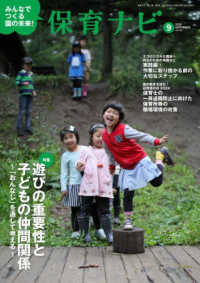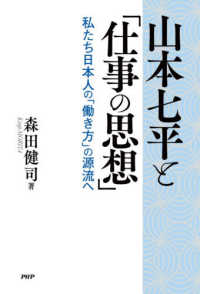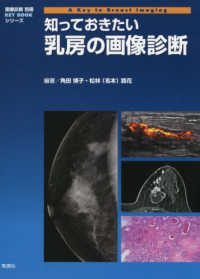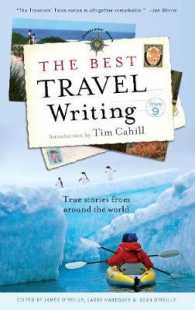Full Description
The primary focus of this book is to educate the reader on the Matching Person and Technology (MPT) model and assessment process that will guide the reader on consumer-centered assistive technology assessment and outcome measures designed to be used for individuals of all ages and all types of disabilities. The first section of the book introduces the MPT and Matching Assistive Technology and CHild (MATCH) assessment process and discusses key documents that align with the assessments including the International Classification of Functioning, Disability, and Health and the Occupational Therapy Framework III.
The second section of the book focuses on the international emphasis of the MPT and MATCH assessments. At present, there are eight countries that are represented in this section. Each chapter includes information on the assessment translations (with access to copies if available or at least access on how to obtain copies). The authors discuss research on the use of the assessment within their country to support the assessment use. Lastly, a case scenario is discussed in each chapter to provide the reader with an example of how the assessment was used with an actual consumer. The last section of the book includes a focus on outcome studies in the areas of early childhood, education (primary secondary, and postsecondary), work, and functional independence. This section provides the reader insight into how to outline outcome measures within the MPT and MATCH process. There is an additional section on future works that includes a brief introduction to the Service Animal Adaptive Intervention Assessment.
This book is targeted to the Assistive Technology Providers (ATP) and policymakers (health care, education, and rehabilitation engineering), the university student pursuing a career in these areas, and the consumer of assistive technology.
Contents
0. Introduction. 1. The MPT and MATCH Framework. 2. The Matching Person and Technology Assessment Process and Measures. 3. The MATCH-ACES Assessment Process and Measures. 4. The MPT and MATCH-ACES Align with the WHO's ICF and GATE Missions. 5. Matching Assistive Technology and Persons with Disabilities in the Republic of Ireland: Using the Matching Person & Technology Assessment Process. 6. The Matching Person & Technology Application in Spain. 7. The Italian Adaptation of the MATCH Assessment. 8. The Matching Person and Technology Model Application in Israel. 9. MPT Use in Paralympic Sports in Brazil. 10. Applying the Matching Person and Technology Model to Promote Academic Achievement and Career Success for Postsecondary Students with Traumatic Brain Injuries. 11. Assistive Technology Outcomes in Cognitive Rehab. 12. Assessing MPT Outcomes and the Person's Realization of the Benefit from the Use of Technology. 13. Training the Service Providers.








